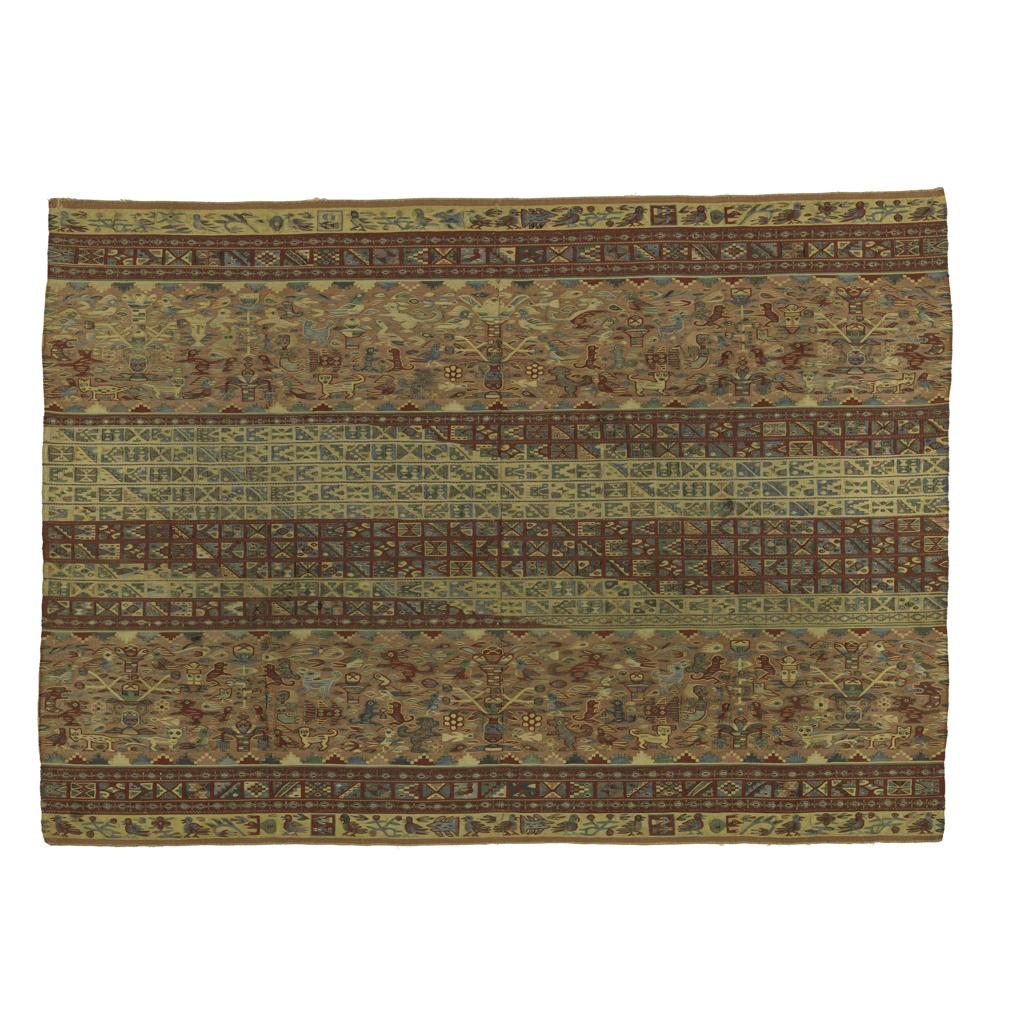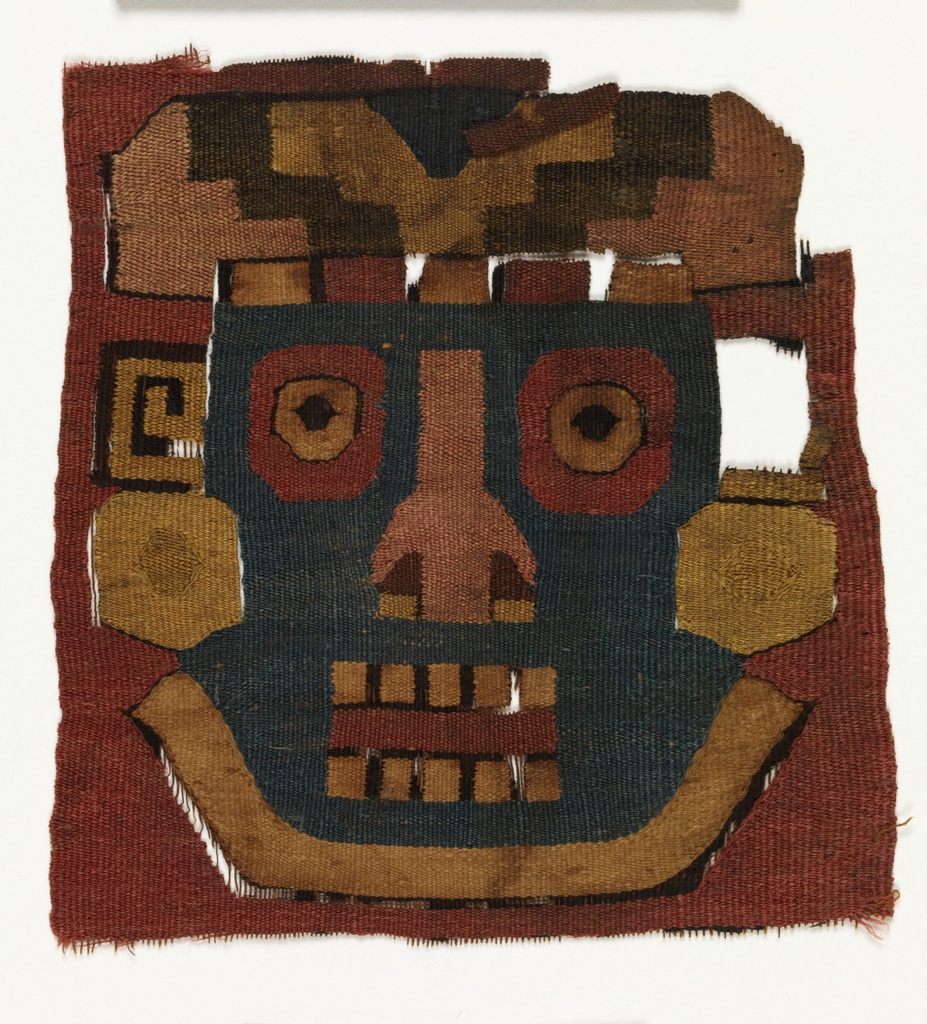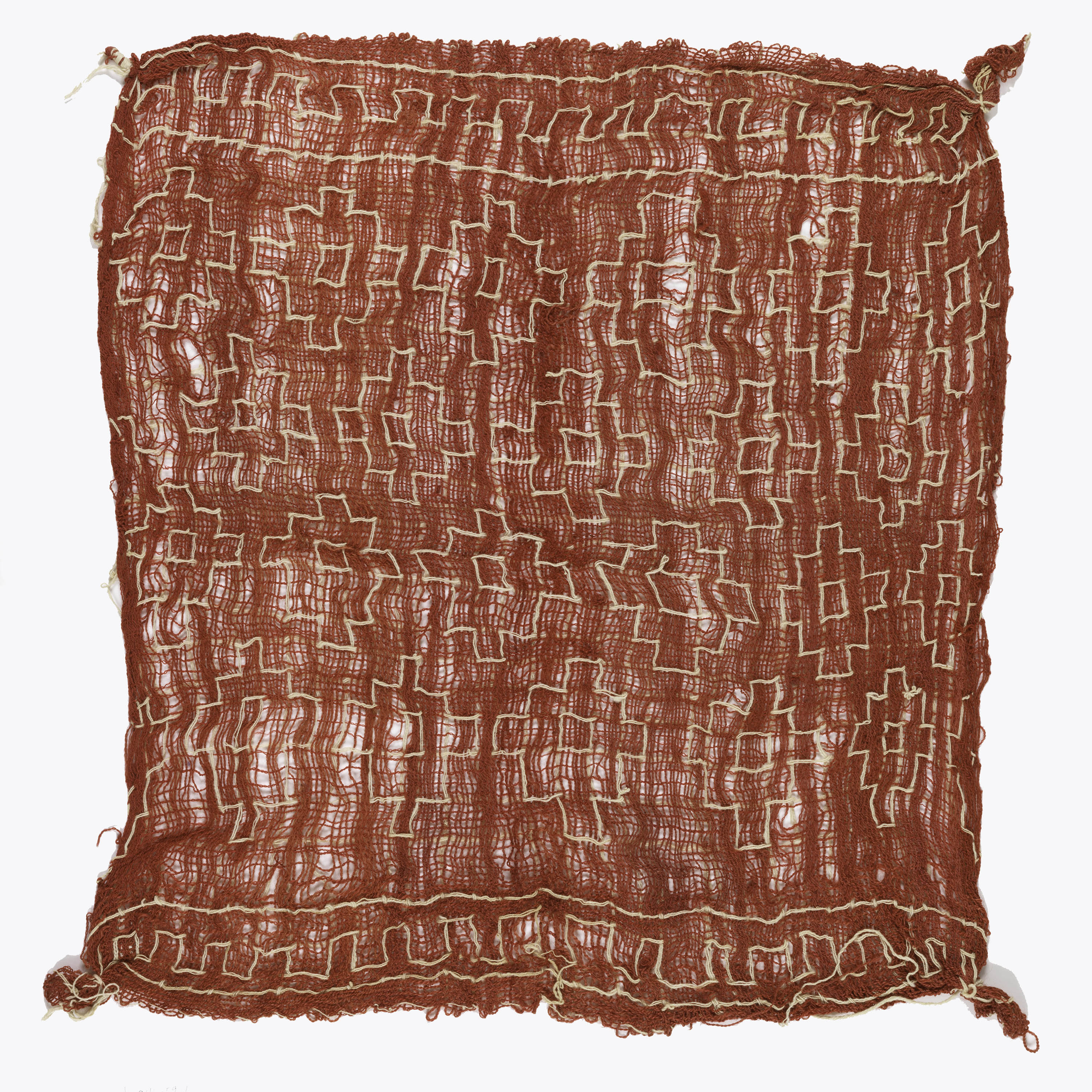This post was originally published on December 20th, 2012. This beautiful cloth is a woman’s shoulder mantle, called a lliclla in the Quechua language of the Inca Empire, and was made during the colonial period of Peru. A perfect blend of the cross-cultural elements of the 16th- and 17th-century era of global trade, the Chinese...
Author: Christine Giuntini In celebration of the third annual New York Textile Month, members of the Textile Society of America will author Object of the Day for the month of September. A non-profit professional organization of scholars, educators, and artists in the field of textiles, TSA provides an international forum for the exchange and dissemination...
The idea of completeness was central to Andean design thinking. This simple, small piece is a four-selvedged cloth, with all edges intact. Structurally, it integrates two woven planes, one red and one white, in a double-cloth structure. The red ground is a simple plain weave, where yarns go over and under in a regular interlacement....


